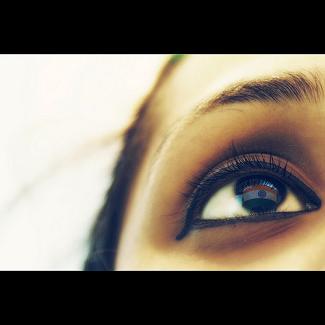Vitreous body floaters
Vitreous body floaters (also known as vitreous body haze) are often called flying flies (Latin muscae volitantes), which are pathologies of the vitreous gel filling the eye. During the occurrence of this medical condition clusters of collagen fibers are forming and various substances with any degree of density, mobility, thickness and transparency accumulate in vitreous of the eye. The appearance of the floaters is a sign of destruction of the vitreous body, or the changes in its architecture.
Vitreous body is a gelatinous structure that fills the largest room in the eye. There is a "scaffolding" of the whole eye in it which are the interconnected strands of collagen. They give the eye its shape and protect the retina. With age, this gelatinous substance becomes more fluid, and the collagen strands merge and become more visible in the field of view as mobile points, called floaters.
The phenomenon of perceiving floaters in the eye is called the Latin myodesopsia in medicine and can occur at any age. Most often it occurs during looking at the sky, the snow or the bright background (e.g. ceiling) in well-lit rooms with the half-closed eyes. Floaters form in the fetal period or as a result of degenerative changes of the vitreous body and retina.

Vitreous body floaters appear in the form of small and dense threads, spots, shadows, wrinkles and spider webs that include typically the center of the field of view. They can create conglomerates (degenerative floaters), or take the form of the rings (Weis ring, which is a detached fragment of glial tissue that connects the vitreous body with the optic disc). Vitreous body floaters are usually accompanied by: dilution of this part of the eyeball, collapsing and the detachment, as well as reducing of the volume of the vitreous body. Floaters arise from intraocular tissues, so the immune system of the eye does not recognize them as foreign, and therefore they are rarely absorbed. Sometimes the vitreous floaters can be absorbed by itself, move inside the eye or their number can rise. Their occurrence is not directly loss of vision thread, and one can learn to live with them. Sometimes, the amount and location of the floaters may be more worrisome and cause difficulties in reading and computer work and disturb the vision while driving. Then you can use specialist laser procedure to remove it. If a person sees vitreous floaters ever since, they are probably the remains of organic fibers, that were established in the embryonic period. However, pathological vitreous body floater is caused by bleeding into the eye, inflammation, or the presence of cholesterol or calcium particles that arise in that part of the eye.
Vitreous body floaters can be divided into two types:
- Pathological (e.g. due to a foreign body lodged in the eye, micro bleeding, inflammation)
- Mild (non-threatening eye directly, although they can be annoying)
The reasons for the formation of vitreous floaters include: vitreous body protein denaturation, collagen metabolic disorders or retinal cells, the loss of hyaluronic acid covering collagen fibers, the formation of crosslinks between the collagen fibers, vitreous body detachment, loss of hyaline artery, diabetes, myopia, glaucoma , cataracts, aging, and post inflammatory changes and injuries of the eye.
Vitreous floaters can be treated:
- Eye-drops containing potassium iodide and reinforcing the vision or blood vessels
- By inotrophpresis, so putting electrode to the eyeball through gauze pads soaked with potassium iodide
- Injection methods (for floaters after bleeding)
- laser procedures (the laser beam hits the floater, and evaporates it, these treatments are ineffective when it comes to moving floaters and are very time-consuming)
- specialist procedure, based on "pumping" from the vitreous of the eye, and then replacing it with a special substance or gas oil (it carries a lot of complications and it is used only in a serious cases, however, it is the most effective treatment method).